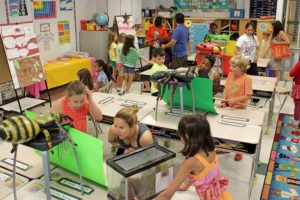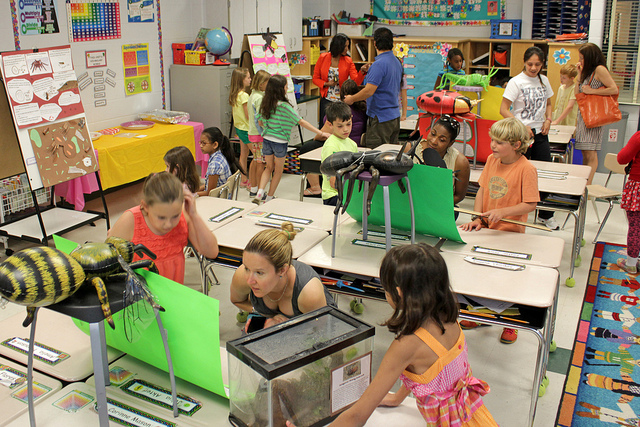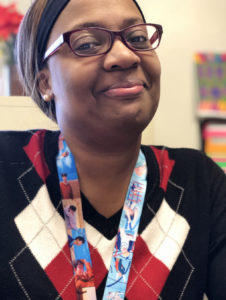 What does diversity in a public education classroom look like? Well, of course, it depends what school you are looking at as well as the particular class. An academically gifted class at a rural school will look totally different from a special education class in a more economically sound school.
What does diversity in a public education classroom look like? Well, of course, it depends what school you are looking at as well as the particular class. An academically gifted class at a rural school will look totally different from a special education class in a more economically sound school.
When addressing the needs of students, teachers have to consider all aspects of each individual student. In order to accomplish this, one had better have a bag of strategies ready because the saying “every child is different” has never been more true than it is today.
I recently attended a workshop early on a cold Saturday morning (because that’s just what teachers do) in Raleigh called EdCamp:Diversity. It was sponsored by Wake County Public Schools’ Office of Equity and Diversity. Several breakout sessions were available to address the various needs of Wake County’s students. WCPSS Superintendent Kathy Moore gave the keynote address and several community agencies had tables in the vendors area. These vendors provided support to students and their families inside and outside of school buildings.
Molly Herndan, teacher at Pilot Mountain Middle School, is a member of the core group that organized the event. I asked Miss Herndan about why it was important for her to be a part of making this diversity event happen in Wake County? She answered, “…..because after having been at three different schools in last few years and seeing that all three schools were having conversations around equity, I wanted to be apart of starting a larger conversation in WCPSS. I had attended ed-camps before and loved the participant driven setup and the idea of having participants pick what they wanted and needed around this important topic!”
She added that she hoped to “bring together like minded individuals who wanted to continue this very important equity conversation.” Herndan added, “I also hoped to connect with other middle school teachers about what was going on in their schools. I wanted to continue to light the fire about the state’s need to face inequalities head on and have the difficult conversations about race, equity, and bias.”
I also asked Herndan how she thinks educators could be allies for our diverse student population? She responded, “I think educators can be allies for our diverse populations by understanding why there are inequities in education and what challenges some of our students face. If we are able to understand how our bias may be hindering them, I truly feel we can start to understand students better and what they need from education. We can also be allies by being transparent with our students and letting them know that we are continuing to grow ourselves and learning about how race and bias is affecting our teaching and their learning. Someone at a REI (Racial Equity Institute) training said that if the conversations don’t make you feel uncomfortable then you are never going to accomplish anything. Being comfortable in conversation has never gotten anything done. It was so hard to hear at first, but now I keep telling myself, ‘if I’m uncomfortable having these conversations, then I’m going in the right direction.’”
The EdCamp focusing on diversity also included guest speakers such as Dr. Rhonda Bullock from Durham. Dr. Bullock and Superintendent Moore both spoke about the importance of not just acknowledging diversity, but also appreciating it and being determined to honor it as part of successful classrooms.
I’m on our equity team at my school. The team meets at least monthly to discuss equity in our own school’s diverse population of students. What we focus on is supporting responsive discipline, but also being proactive instead of reactive. We want to ensure our students feel safe and needed, even in vulnerable moments.
Students of color are not the only groups represented in our classrooms. We need to create safe spaces for students of color, but also for students who are transgender, LGBTQ, and students who are uncomfortable using the restrooms based on the assigned sex they were assigned at birth.
How do educators create a safe space for students? Teaching Tolerance created a list of strategies and best practices to do just that. You can love every student and have the best intention for them and still not be sure how to address their individual specific needs. This helpful list can be found at: https://www.tolerance.org/magazine/fall-2018/tts-new-lgbtq-best-practices-guide.
Equity and diversity also includes religious practices. Students come into my classroom from many faith traditions. Last year I visited the Newseum in Washington, DC and saw a display about various religions and how they are represented in classrooms. How do we focus on religion and equality in the classroom? Charles C. Haynes, vice president of the Newseum Institute and executive director of the Religious Freedom Center had an answer. “I just hope that teachers in classrooms help students understand that equality and liberty are both core principles in our country, and without both of them we’re lost. We need to teach both and to honor both.” The details he discusses can be found at the following link: https://www.tolerance.org/magazine/fall-2015/religion-versus-equality.
Another great resource to address various needs that include culturally respective measures is a book entitled, For White Folks Who Teach in the Hood… and the Rest of Y’all Too: Reality Pedagogy and Urban Education (Race, Education, and Democracy) by Christopher Emdin. Our district had the author speak at the beginning of the year and sponsored a book study for faculty. I highly recommend the book for teachers seeking direction regarding issues of equity.
So, the next you think about the decision making that goes into creating a diverse and equitable classroom environment, remember, there’s so much to consider. Individual students matter.
Here are some additional resources that address classroom equity and diversity:
Safe Schools NC:
https://www.safeschoolsnc.org/resources.html
COSEBOC:
https://www.coseboc.org/sites/coseboc.org/files/assets/StandardsBooklet_Final_Web_Pages-10-25-18.pdf
Study.com:
https://study.com/academy/lesson/religious-diversity-in-classrooms.html
NaShanda Cooke is an educator for all students, collectively and individually. She shows up every day to serve them.


There are no comments
Add yours